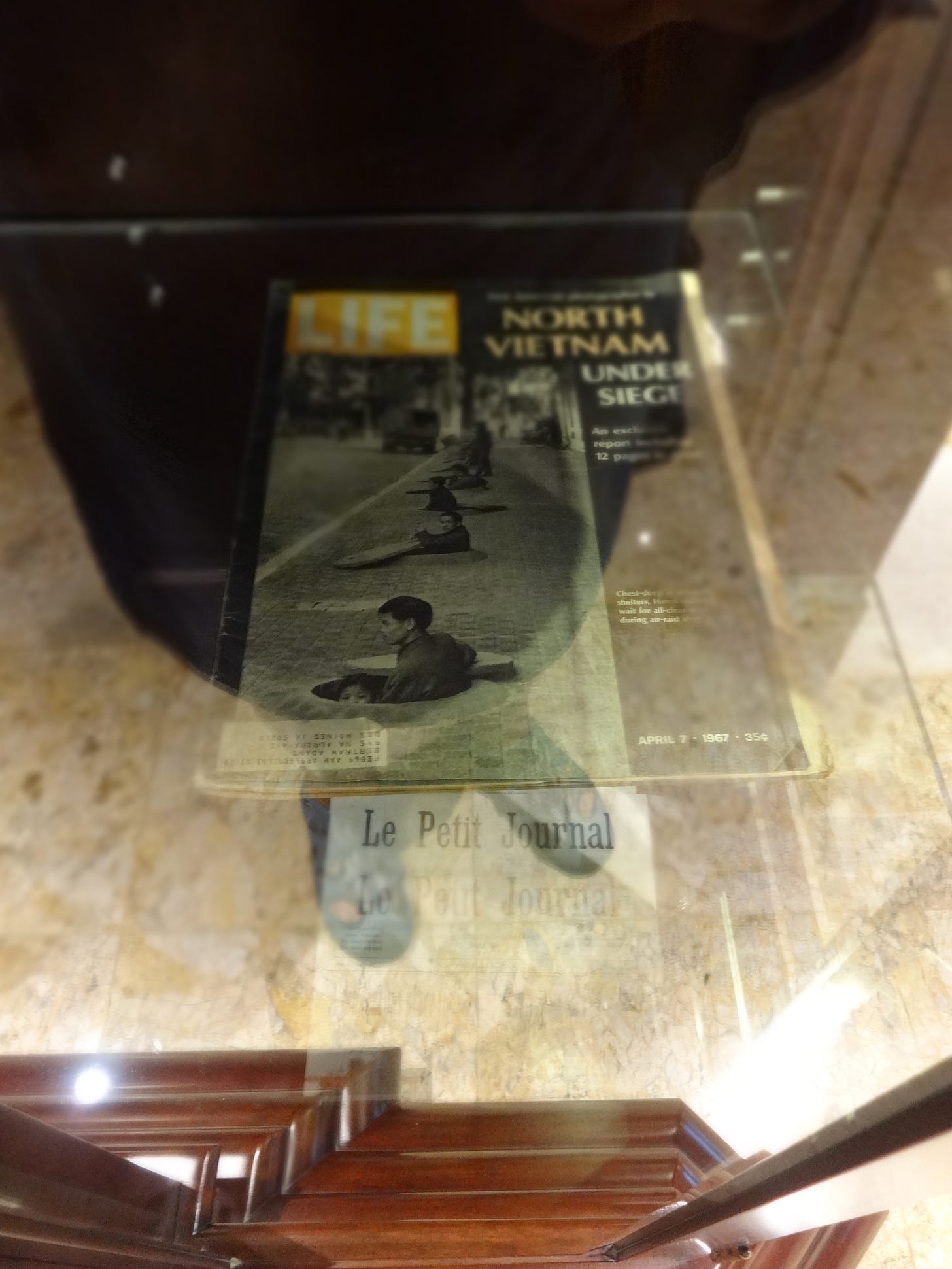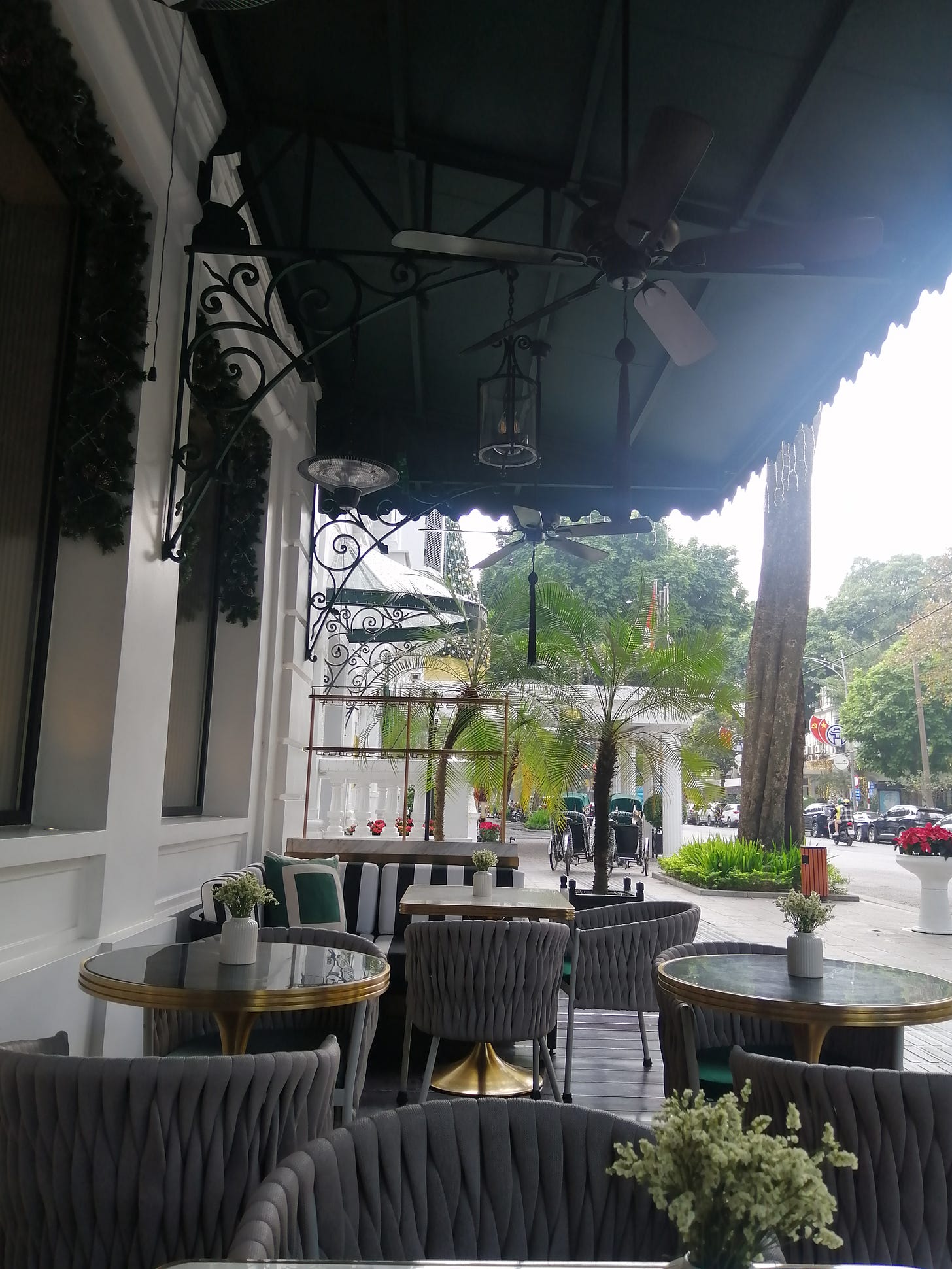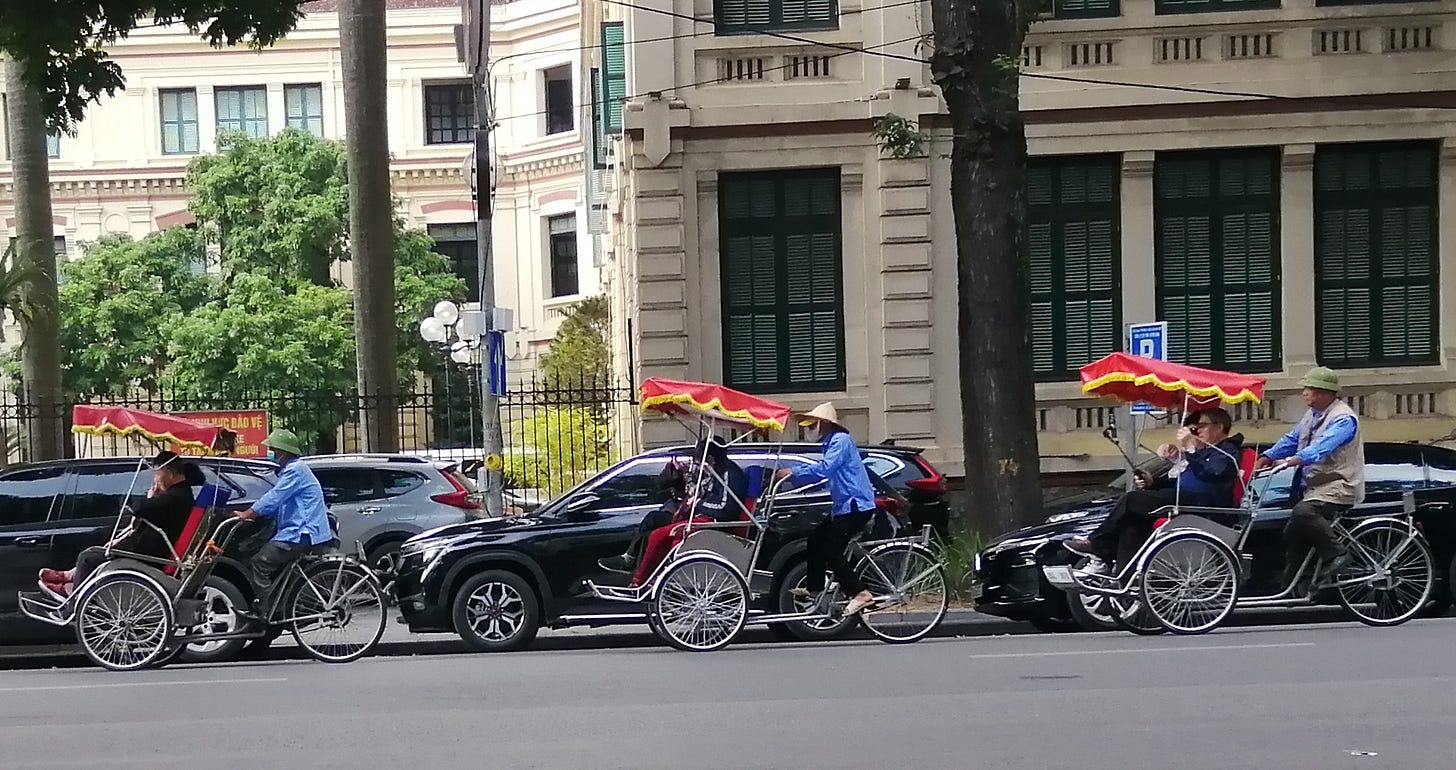Remembering the iconic Sofitel Legend Metropole Hotel on the 50th anniversary of the fall of Saigon
I’ve been thinking about my trip to Vietnam last year and how much I learnt about the ‘American War’ from my visits to both Saigon in the south and Hanoi in the north.
Today is the 50th anniversary of the fall of Saigon, when the Vietcong advanced far enough from North Vietnam that they could finally take over Saigon and the whole of South Vietnam. The images of the last helicopter taking off from the roof of the American Embassy in Saigon, now renamed Ho Chi Minh City, went round the world and are still iconic today.
I thought I was reasonably well informed about current affairs. I taught Vietnamese refugees in the 1970s and 1980s, who gifted me a lasting appreciation of home cooked Vietnamese food. Yet my most surprising discovery, and the one that stays with me most strongly today, involves Joan Baez and the mementos I came across in a display case in a corner of the Sofitel Hotel foyer in Hanoi.
51 years after Joan Baez stayed at the mansion style hotel in 1972, I strolled around the luxurious dark wood and cream inlaid foyer. I was admiring the huge French wine cellar when I noticed a glass case in the opposite corner with a small display of what looked like yellowing magazines, a creased album cover and a framed photograph of an artist at work.
A few steps to the side and I was in front of the finished painting from the framed photograph. It was of a serious young boy in black against a fiery orange background. The artist was Joan Baez and the painting showed how she imagined the boy in her song 'Where are you now, my son?', which she wrote in the Hanoi Sofitel in 1972 during one of the worst bombing raids since the Second World War. It’s a hard listen at over 20 minutes long, with air raid sirens wailing in the background.
A large part of the song was written in the hotel’s underground bomb shelter, where Baez and the others in her fact finding delegation, there at the invitation of the North Vietnamese government, took shelter from the bombing above ground. A copy of Life magazine in the same display cabinet shows how the people of Hanoi would shelter during raids. The black and white photo on the front cover shows how the north Vietnamese, sometimes with their small children, would disappear into safety tunnels dug beneath the streets and disguised by camouflaged covers. It’s a strange shot taken at pavement level, with only a line of heads and shoulders visible above street level.
Just over forty years on, in 2013, Joan Baez returned to stay in the Hanoi Sofitel again. Reportedly, the moment she arrived underground beneath the Bamboo Bar once more, she leaned her hand against the cement wall of the old bunker and began singing ‘Oh, Freedom’:
‘And before I'd be a slave
I'd be buried in my grave
And go home to my Lord and be free.’
Today, the hotel offers tours of their underground bunker twice a day.
At the moment my substack is free to read. If you like what you read here and want to see more, you can buy me a coffee at
https://buymeacoffee.com/annepage
Or you can subscribe to see more posts like this soon.
Last year, I was free to walk through Hanoi old town on my way to eat breakfast on the atmospheric French style terrace of the Sofitel Legend Metropole Hotel. The inner courtyard and swimming pool was full of beautiful people - Americans, Europeans, Chinese, Malaysian, a few English, a few Australians.
The list of celebrities, the great and the good who have stayed at the Hanoi Sofitel reads like an encyclopedia of famous achievers and is displayed on several panels that line the ground floor corridor. From Charlie Chaplin to Ralph Fiennes to Angela Merkel to Lang Lang to the Queen of Jordan to Mark Zuckerberg, visitors continue to return long after the hotel ceased to be the de facto hospitality residence for the North Vietnamese government 50 years ago and more.
Later that day, I browsed the bookshops in the narrow streets opposite. I bought a copy of The Quiet American by Graham Greene and gave it to my son as a sort of history lesson, as a way to remember what came before the forward thinking Vietnam of today emerged, entrepreneurial and very very welcoming to travellers.
At the moment my substack is free to read. If you like what you read here and want to see more, you can buy me a coffee at
https://buymeacoffee.com/annepage
Or you can subscribe to see more posts like this soon.









